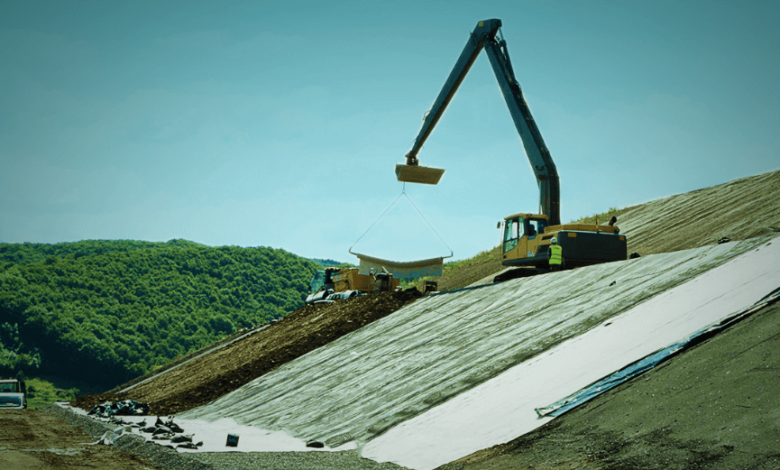Importance of Geosynthetic Solutions for Slope Reinforcement

Introduction
In modern civil and geotechnical engineering, stabilizing slopes and preventing erosion are essential to ensure the longevity of infrastructure and the safety of nearby environments. Engineers increasingly turn to geosynthetic products for these purposes due to their strength, flexibility, and cost-effectiveness. Understanding how such materials function and how geomallas para taludes precio varies based on different factors helps professionals make better project decisions.
What Are Geogrids for Slopes?
Geogrids for slopes are synthetic mesh structures designed to reinforce soil and improve its mechanical behavior. These grids, usually made from polymers like polypropylene or polyester, help retain soil on steep surfaces while allowing natural drainage. When properly installed, they prevent landslides, erosion, and surface cracking by distributing stresses evenly across the reinforced area.
See also: Food Handlers Medical Test – Protecting Both Customers & Businesses
How Geogrids Work in Slope Stabilization
The main principle behind slope stabilization with geogrids lies in soil confinement. The open grid structure interlocks with the soil particles, creating a composite layer that resists shear forces and movement. This mechanism strengthens the slope’s overall stability and prevents downward soil displacement caused by gravity, water pressure, or heavy loads.
Different Types of Geogrids for Slope Applications
Uniaxial Geogrids
Uniaxial geogrids are designed for applications where reinforcement is primarily needed in one direction. They are ideal for tall retaining structures and steep slopes, where vertical tensile strength is essential.
Biaxial Geogrids
Biaxial types provide strength in both directions—longitudinal and transverse. They are suitable for moderate slope stabilization projects and areas exposed to multidirectional stress forces.
Triaxial Geogrids
Triaxial geogrids offer multi-directional load distribution, ensuring higher confinement and stability. These are commonly used in complex terrains and areas prone to erosion.
Benefits of Using Geogrids in Slope Projects
Enhanced Soil Strength
By combining the mechanical properties of synthetic materials with natural soil, geogrids significantly improve slope stability. They enhance shear strength and reduce settlement.
Erosion Control
One of the key advantages of using geogrids on slopes is their ability to control surface erosion. They help hold the topsoil in place even during heavy rainfall or water runoff.
Cost-Effective Construction
Although the geomallas para taludes precio may vary depending on quality and specifications, these materials help save money in the long term. They minimize maintenance requirements and reduce the need for expensive retaining structures.
Long-Term Durability
High-quality geogrids resist chemical reactions, UV degradation, and biological attacks. This makes them ideal for long-term soil reinforcement in exposed outdoor conditions.
Environmental Compatibility
Geogrids are environmentally friendly because they allow natural vegetation to grow through their openings. This vegetation further stabilizes the slope, creating a green and sustainable reinforcement system.
Factors Affecting the Price of Slope Geogrids
Type of Material
Different materials, such as polyester, polyethylene, or polypropylene, impact both the performance and cost of the geogrid. Polyester types generally offer higher tensile strength and longer service life, often at a higher price.
Manufacturing Process
The production technique—whether woven, knitted, or extruded—also affects geomallas para taludes precio. Extruded geogrids typically cost more but provide superior structural integrity.
Strength Rating and Aperture Size
Higher tensile strength geogrids are used for heavy-duty applications, influencing the price. Aperture size and shape also determine how efficiently the grid interlocks with the soil, affecting both performance and cost.
Project Size and Location
Large-scale projects may benefit from bulk purchasing, reducing the unit cost. However, transportation and import taxes can raise expenses, especially in remote areas.
Brand and Certification
Reliable manufacturers offering tested and certified geogrids often have slightly higher prices. However, their products ensure long-term performance and safety, justifying the investment.
Applications of Geogrids in Slope Engineering
Road Embankments
Geogrids are extensively used to stabilize road embankments. They prevent soil movement and maintain the structural integrity of roads built on uneven terrain.
Retaining Walls
When combined with retaining structures, geogrids improve load-bearing capacity and ensure the wall’s stability against lateral soil pressure.
Railway Projects
In railway embankments, geogrids minimize settlement and enhance the durability of tracks. They are especially useful in soft soil conditions where subsidence is a concern.
Coastal and Riverbank Protection
Geogrids protect riverbanks and coastal slopes from erosion caused by water flow and wave impact. Their flexibility and permeability make them suitable for marine environments.
Landscaping and Green Infrastructure
In landscaping, geogrids support steep garden slopes or embankments while maintaining a natural look. They also promote vegetation growth, contributing to eco-friendly development.
Comparing Traditional Methods with Geosynthetic Reinforcement
Traditional slope reinforcement methods like concrete retaining walls and stone pitching can be costly and environmentally disruptive. In contrast, geogrids offer a lightweight, cost-efficient, and sustainable alternative. While the geomallas para taludes precio may vary, the reduced need for heavy machinery and materials makes geogrids an economically attractive choice.
Installation Process for Slope Geogrids
Proper installation ensures maximum effectiveness of geogrid systems. The general process includes:
- Clearing and leveling the slope surface.
- Laying out the geogrid sheets horizontally or vertically, depending on the design.
- Anchoring the sheets securely using stakes or pins.
- Overlapping the edges to ensure continuous coverage.
- Backfilling with soil and compacting in layers for strong interlock.
- Adding vegetation or protective cover for additional erosion resistance.
Following these steps ensures that the reinforcement performs optimally and extends the slope’s lifespan.
Future Trends in Geogrid Development
Advancements in polymer technology continue to enhance geogrid performance. Manufacturers are now developing products with improved tensile properties, UV resistance, and recyclability. Additionally, the integration of biodegradable materials and smart monitoring sensors represents a promising direction for the industry.
Conclusion
The use of geosynthetic materials has revolutionized slope stabilization and erosion control. Among them, geogrids have proven to be one of the most efficient and economical solutions available today. Understanding how factors like geomallas para taludes precio vary depending on quality, type, and project scale is essential for cost planning and effective implementation. By combining engineering precision with sustainability, geogrids contribute to building safer and more environmentally friendly landscapes that endure over time.




